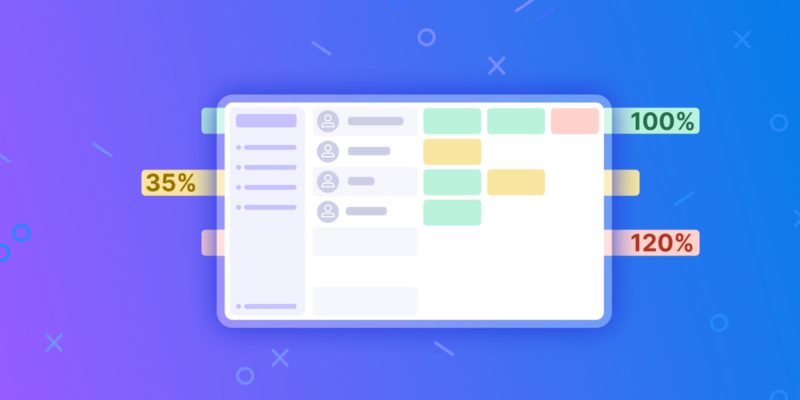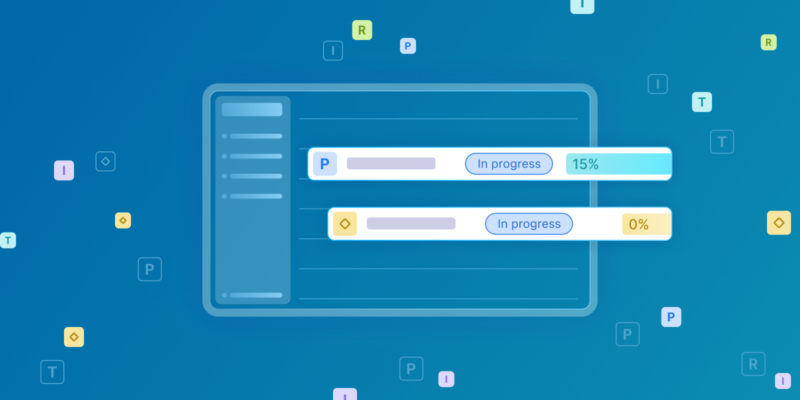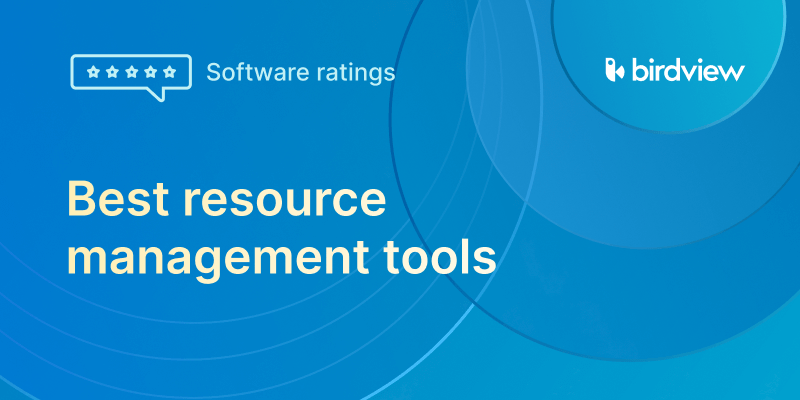Resource leveling balances resource demand with availability, ensuring deadlines are met and resources are used efficiently.
When managing projects, I, as a project manager, often have to face problems or events that require more resources than are available. This situation often arises when you have to plan different tasks simultaneously that employ the same resources, for example, designers in marketing projects.
Resource leveling is my go-to strategy for addressing this. By adjusting the start and end dates of tasks, I ensure resources are distributed more evenly over time. In other cases, tasks need to be rescheduled, resource allocations changed, and the project schedule adjusted.
This approach helps me keep the project on track, maintain momentum, and prevent team burnout.
Thus, we can say that resource leveling is a project management technique used to resolve resource conflicts by adjusting the project schedule.
What is resource leveling?
Thus, resource leveling aims to balance the demand for resources with the available supply. The goal is to meet deadlines while optimizing resource usage effectively.
When resources are over-allocated or there are conflicts in the schedule, project managers must adjust timelines and reassign tasks to ensure smooth project execution.
This approach ensures that resources are allocated efficiently without overburdening team members or causing delays. This is especially valuable in the professional services industry, where projects often require multiple tasks and resource constraints. Here’s a detailed overview of resource leveling, including techniques and practical examples for professional services firms.
Techniques for resource leveling
Resource leveling is essential for effective project management, ensuring resources are used efficiently without overloading or underutilization. It involves various techniques to balance resource demands with availability, helping to avoid bottlenecks, ensure timely project completion, and maintain a smooth workflow. Here‘s an overview of some key resource leveling techniques that can significantly enhance your project management:
- Critical Path Method (CPM): This involves identifying a project’s longest sequence of tasks and adjusting start and end dates to ensure resources are not over-allocated. Tasks on the critical path are prioritized to avoid delays.
- Float Utilization: Float, or slack, is the time a task can be delayed without affecting the project deadline. By using a float, project managers can reschedule non-critical tasks to balance resource demands.
- Splitting Tasks: Dividing tasks into smaller segments allows project managers to reallocate resources more effectively. This technique is useful when a resource is only available intermittently.
- Adjusting Task Dependencies: Modifying task relationships can help balance resource loads. For example, starting a dependent task earlier if resources become available.
- Delaying Tasks: Postponing non-critical tasks to free up resources for more urgent work. This helps avoid overburdening team members and ensures critical tasks are completed on time.
- Parallel Tasks: Scheduling tasks that can be done simultaneously by different resources. This technique maximizes productivity and resource use.
Resource leveling vs. smoothing
Resource leveling and smoothing are vital techniques in project management. Here are their descriptions with examples:
Resource leveling
Resource leveling adjusts task start and end dates to address resource over-allocation, ensuring resources are evenly distributed over time, even if it means extending the project duration.
Example: In an IT project, if a key developer is overbooked with tasks due simultaneously, you might delay some less critical tasks to allow the developer to complete high-priority work without being overburdened.
Resource smoothing
Resource smoothing fine-tunes the schedule within existing constraints to optimize resource usage without changing the project‘s end date.
Example: In a marketing campaign, if a designer is needed for multiple tasks, you can adjust task schedules to fit within their available hours, ensuring they are not overworked and deadlines are still met.
Key differences:
- Goal: Resource leveling focuses on preventing over-allocation and can change the project duration, while resource smoothing aims to optimize resource use without altering the project end date.
- Flexibility: Resource leveling is more flexible with deadlines, while resource smoothing strictly adheres to the original project timeline.
- Application: Use resource leveling when resource availability is a major issue and project deadlines can be adjusted. Use resource smoothing when maintaining the project deadline is critical, and there is some flexibility in task scheduling.
Both techniques help in efficiently managing limited resources and avoiding bottlenecks or delays.
Resource leveling tools
Resource leveling becomes easier with practice. Here are some tips and tools to help streamline the process:
Gantt Charts: Gantt charts are bar charts that visualize a project schedule, making them ideal for identifying and planning the critical path. They provide a high-level overview of task dependencies, start and finish dates, and project duration. As the project progresses, you can rearrange the chart and adjust dates as needed.
Example: Use Gantt charts to spot resource overallocation by visually aligning tasks and deadlines, ensuring team members are not overburdened.

The Birdview PSA Gantt Chart integrates all project aspects. Using the critical path feature, it highlights tasks and dependencies impacting the project deadline.
Leverage project management software: Project management software with resource-leveling algorithms can help resolve overallocation conflicts. It provides visibility into team members’ schedules, preventing scheduling conflicts and double-booking ahead of time.
Example: Software like Microsoft Project, Asana, or Birdview PSA allows you to allocate tasks based on resource availability, ensuring a balanced workload.
Use previous projects: I’d like you to maintain an archive of past project plans and schedules to reference when planning similar projects. Reviewing successful and unsuccessful projects provides insights into task durations and resource requirements, aiding in accurate project planning.
Example: Refer to past marketing campaigns to estimate resource needs for a new campaign, avoiding previous pitfalls.
Leverage historical data with Birdview PSA Harness Birdview’s powerful project portfolio management functionality to analyze and gain insights from data on previous projects. This feature helps you identify successful strategies and avoid past mistakes, leading to more accurate planning and improved project outcomes.

Realistic resource estimates: Accurate resource leveling requires clearly defined project scopes and realistic resource estimates. Teams should estimate resource needs collectively to reduce personal biases, include potential project risks, and use ranges rather than specific values for more reliable estimates.
Example: Involve the entire project team in estimating the time needed for a new software feature, considering potential risks and uncertainties.
Incorporate time buffers: Add time buffers to tasks to account for unexpected delays or issues. This proactive measure ensures that resource leveling adjustments can be made without significantly impacting the project timeline.
Example: Include extra time in the schedule for critical tasks, ensuring the project stays on track despite delays.
Regularly review and update plans:Regularly review and update project plans and resource allocations to promptly identify and resolve any resource conflicts or overallocation issues.
Example: Conduct weekly reviews of the project plan to adjust resource assignments based on current progress and upcoming tasks.
Utilize collaboration tools:Use collaboration tools to enhance communication and coordination among team members and clients. This ensures that everyone is aware of their responsibilities and any changes in resource allocations, facilitating smoother resource-leveling.
Example: Use tools like Slack, Microsoft Teams, or Birdview’s collaboration features to keep your team, clients, and stakeholders updated on project changes and resource reallocations.

By incorporating these tools and techniques, you can effectively manage resources and ensure your projects stay on track, enhancing productivity and achieving project success.
Resource leveling examples
To illustrate how resource leveling can change your team’s workflow, here are some examples for professional services projects. These examples show how resource leveling can help distribute workloads, prevent burnout, and ensure timely project delivery.
- Consulting firms:
- Scenario: A consulting firm has multiple ongoing projects, and senior consultants are over-allocated.
- Solution: The project manager uses the Critical Path Method to prioritize tasks on the critical path and adjusts non-critical tasks using float. This allows senior consultants to focus on high-priority tasks without overloading their schedules.
- Marketing agencies:
- Scenario: A marketing agency needs to launch multiple campaigns simultaneously, and designers are stretched thin.
- Solution: The agency splits design tasks into smaller parts, reassigning some to junior designers and adjusting task dependencies to ensure timely completion. Delaying non-urgent design work helps balance the workload.
- Legal services:
- Scenario: A legal firm is preparing for several court cases, and paralegals are overbooked.
- Solution: The firm delays non-critical document review tasks and uses parallel task scheduling for research activities. This ensures that paralegals can focus on urgent case preparations.
- Engineering services:
- Scenario: An engineering firm has a tight project deadline, and specialized engineers are over-allocated.
- Solution: The firm adjusts task dependencies and utilizes float to reschedule non-critical engineering tasks. They also bring in additional resources temporarily to handle the workload without affecting the project timeline.
Read more:
What is Resource Management
Resource management in project management: process, tools, benefits & technique
What is Resource Utilization and Analysis?
5 Common Resource Allocation Problems and How to Solve Them
How to apply resource leveling
Let’s look at how to apply resource leveling to a marketing company using Birdview PSA.
As a project manager at a marketing agency, balancing resources can be challenging, especially during peak campaign seasons. Here‘s a step-by-step guide to applying resource leveling in our projects using Birdview PSA:
Step 1: Identify resource overallocation
Review project plans in Birdview PSA to find overallocated team members.
Example: Check if top graphic designers are scheduled for multiple campaign tasks simultaneously. Birdview PSA‘s resource allocation view will highlight any allocation issues.
How: Use Birdview PSA‘s resource allocation features to identify allocations quickly and easily.
Step 2: Assess task dependencies
Understand task dependencies using Birdview PSA. Identify which tasks can be rescheduled without impacting the overall timeline.
Example: If social media posts depend on the content strategy being finalized, reschedule less urgent tasks to free up writers. Birdview PSA allows you to visualize these dependencies.
How: Utilize Birdview PSA‘s task dependency visualization tools to assess and adjust task sequences.
Step 3: Utilize float
Find tasks with float time in Birdview PSA and reschedule them to balance the workload.
Example: Push back the email campaign task, which has a float of three days, to allow designers to focus on urgent ad designs first. Use Birdview PSA‘s float management features to identify and adjust these tasks.
How: Leverage Birdview PSA‘s float calculation to identify tasks with slack time and adjust their schedules accordingly.
Step 4: Split tasks
Break larger tasks into smaller, manageable parts in Birdview PSA and distribute them among available team members.
Example: Divide a large market research task into competitor analysis and audience profiling, assigning these to different analysts. Birdview PSA‘s task breakdown feature makes this easy.
How: Use Birdview PSA to create subtasks and assign them to various team members to distribute the workload evenly.
Step 5: Adjust timelines
Reschedule non-critical tasks so that critical tasks get the necessary resources first using Birdview PSA.
Example: Delay creating social media graphics to reallocate resources to an urgent video production task. Adjust timelines directly in Birdview PSA to reflect these changes.
How: Use Birdview PSA‘s timeline adjustment features to reschedule tasks, ensuring critical tasks are prioritized.
Step 6: Hire temporary resources
When internal resources are stretched thin, consider bringing in freelancers or temporary staff.
Example: Hire freelance graphic designers for overflow tasks like banner ads. Birdview PSA can track these external resources and integrate their schedules into the project plan.
How: Use Birdview PSA to integrate and track the schedules of temporary or freelance resources.
Step 7: Monitor and adjust regularly
Continuously track resource allocation and project progress in Birdview PSA, making adjustments as needed.
Example: Use Birdview PSA to monitor task completion and resource usage. Adjust schedules dynamically to accommodate any changes.
How: Regularly update and monitor your project plan in Birdview PSA to ensure resource allocation remains balanced and efficient.
Example scenario
Imagine our agency is working on a major product launch for a client. Initially, the project plan shows our senior content creators are overbooked with simultaneous content creation and campaign strategy tasks.
- Identifying Overallocation: Use Birdview PSA to identify that our senior content writers are assigned to develop blog posts and social media strategies at the same time.
- Using Float: Discover that blog post creation has a float of five days and delays it, allowing writers to complete the social media strategies first in Birdview PSA.
- Splitting Tasks: Split the content creation task into keyword research and drafting in Birdview PSA, assigning these to junior writers, and freeing up senior writers for strategic work.
- Hiring Temporary Resources: Bring in freelance writers to help with additional content needs, tracking their work in Birdview PSA.
- Monitoring and Adjusting: Use Birdview PSA to track progress and reallocate resources as needed, keeping the project on schedule and our team balanced.
By following these steps in Birdview PSA, we can effectively apply resource leveling in our marketing projects, ensuring that our team is productive, our deadlines are met, and our clients are satisfied.
Benefits of resource leveling
- Optimized resource utilization: Ensures resources are used efficiently, reducing downtime and preventing burnout.
- Improved project scheduling: Helps maintain realistic project timelines by addressing resource conflicts early.
- Increased productivity: Balancing workloads allows team members to work more effectively, leading to higher productivity.
Enhanced project control: Provides better control over project execution, allowing for adjustments to be made proactively.
Resource leveling with Birdview PSA
Project Management software Birdview PSA enhances resource leveling by offering real-time visibility into resource allocation, making it easier to identify and resolve overallocation issues.
Birdview PSA’s portfolio management functionality lets you analyze past project data, enhancing planning accuracy and resource management efficiency.
Its integrated Gantt charts help visualize task dependencies and adjust schedules seamlessly. The platform’s collaboration tools keep your team and stakeholders updated on project changes.

Birdview PSA offers the tools to effectively track your resources from the start. Try our free 30-day trial, featuring an interactive Gantt chart for full team workload visibility.
Read more:
Resource allocation in professional services
Resource Optimization in Project Management
Resource Capacity Planning for Project Management – Guide 2024
Professional Services Resource Management – Ultimate Guide



